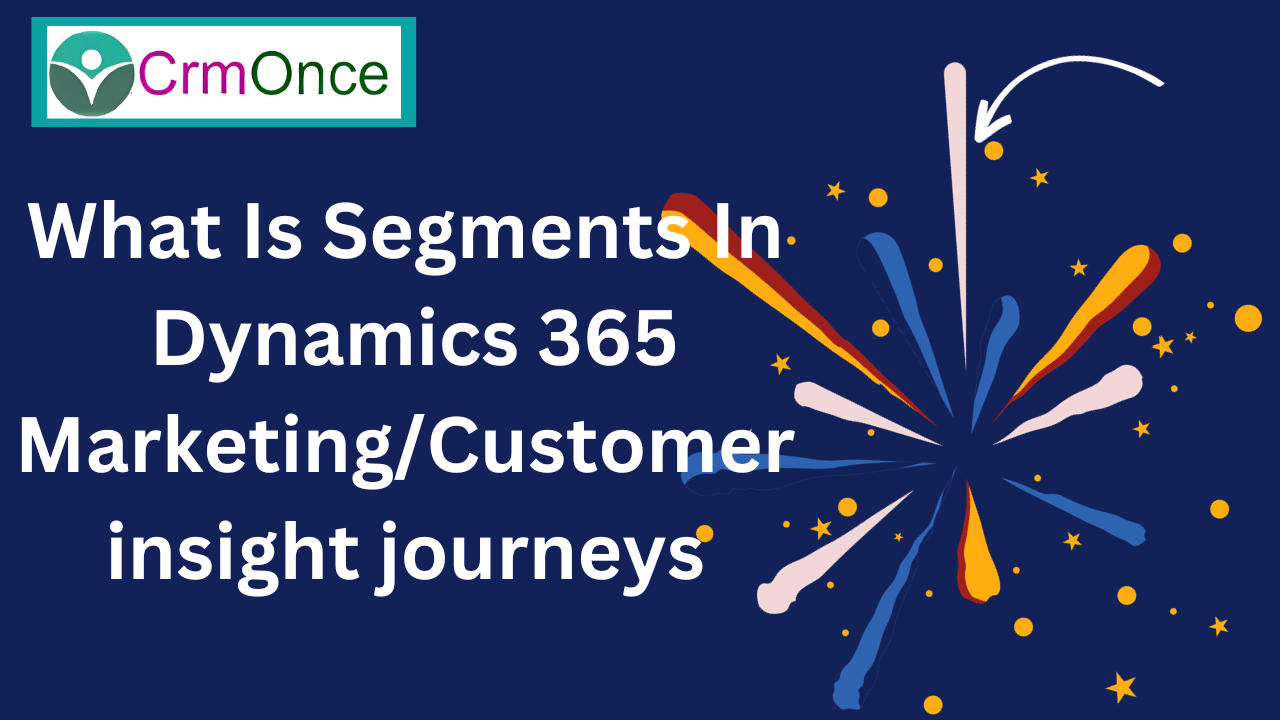Dynamics 365 Marketing Introduction:
Dynamics 365 Customer insight journey “Segments” means accessing the customers data. Then Customer segmentation involves dividing a customer base into groups that share similar characteristics, such as demographics, behavior patterns, or interests. Journey analysis, on the other hand, involves tracking the customer experience from initial contact through purchase and beyond.Segments in Dynamics 365 are collections of contacts that you target with a customer journey.
Choosing the correct audience to target is crucial for increasing marketing return on investment. With the robust, user-friendly logic builder in Dynamics 365 Customer Insights – Journeys, you can create segments right away without needing to possess specialised knowledge of intricate data structures and logical operators. Before designating your segment as “Ready to use” in customer journeys, you can even view an estimate of the segment’s membership and size.
Types of Customer Segmentation in D365:
The process of breaking up a customer base into groups of people who have similar features is known as customer segmentation. But not every customer segment is created equal. Businesses can utilise a variety of customer segmentation techniques to customise their marketing and customer care strategies to the particular requirements of each group. The following are a few of the most popular forms of client segmentation:
1. Demographic segmentation: Segmenting customers based on demographic characteristics, such as age, gender, income, education, and family status, is known as demographic segmentation. Businesses can use this to develop marketing campaigns that are specifically targeted at each group’s interests and preferences.
2.Geographic segmentation: Customers are divided up according to their geographic location, such as city, state, or region, through geographic segmentation. This can assist companies in developing marketing campaigns that are specific to the climate, language, and culture of each location.
3.Behavioural segmentation: This kind of segmentation splits consumers according to their actions, such as using particular goods or services, participating in marketing campaigns, or making previous purchases. Based on the distinct behaviours of each group, this can assist businesses in developing targeted marketing campaigns and enhancing the customer experience.
4.Psychographic segmentation: This kind of segmentation splits clients according to their interests, values, and personalities. This can assist companies in developing marketing strategies that speak to the distinct worldview, values, and way of life of each group
5.Firmographic segmentation: This kind of segmentation divides clients according to firm attributes like industry, revenue, or company size. It is commonly used in business-to-business (B2B) marketing. Based on the distinct requirements of every B2B client, this can assist companies in developing targeted marketing campaigns and enhancing the customer experience.
For any Help or Queries Contact us on info@crmonce.com or +919014146800.

